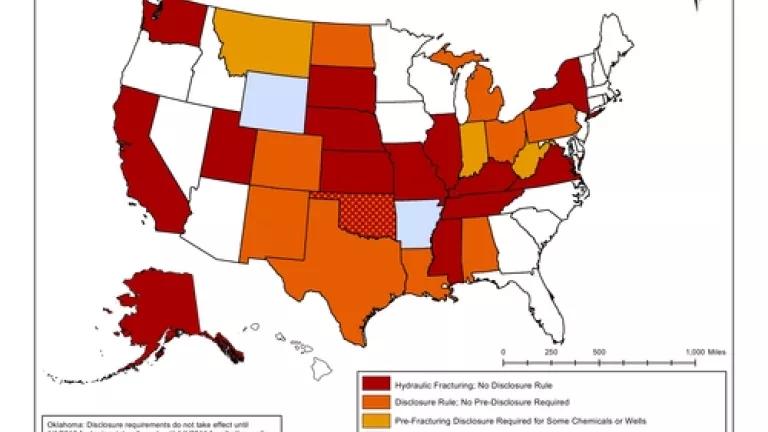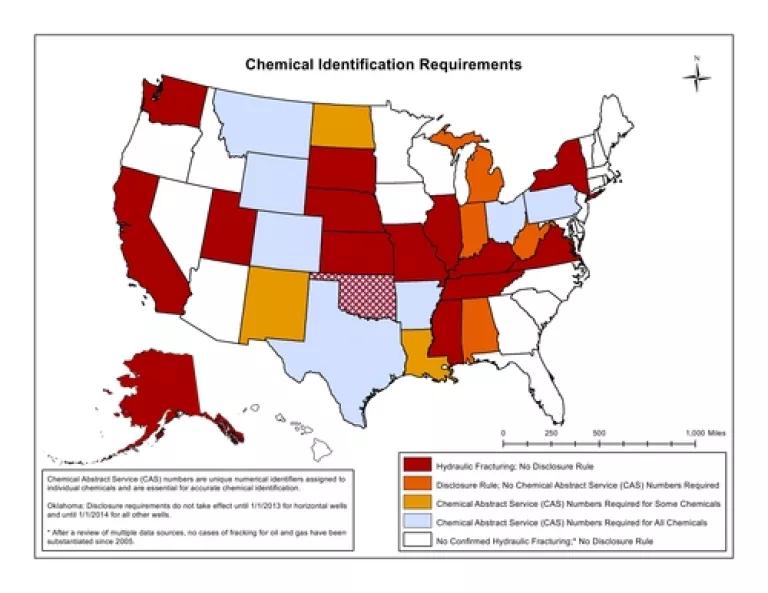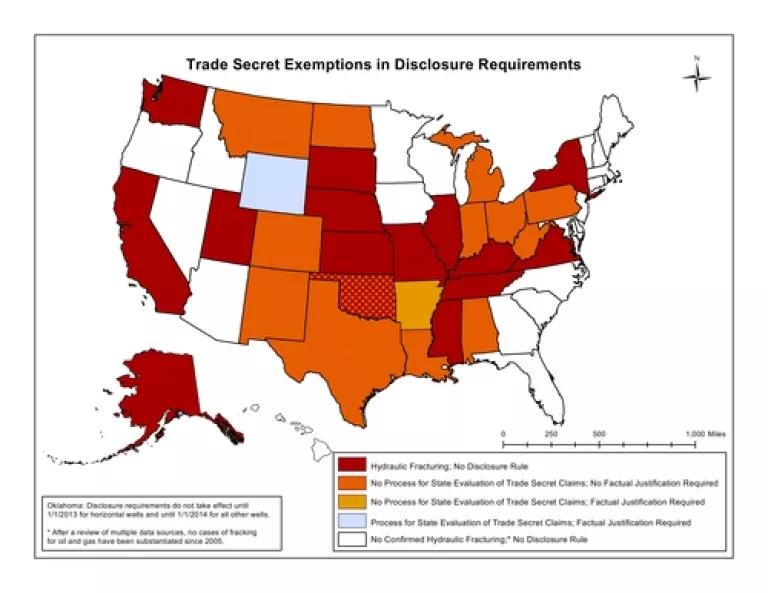
Thousands of people are expected to come together in Washington, D.C., later this week at a rally to demand more federal safeguards for fracking. The latest evidence of the need for strong federal protections is a brand new NRDC analysis of how state laws on fracking disclosure fall short--across the board. My colleague Matthew McFeeley investigated these laws and guest blogs about our new analysis in detail below:
Cathy Behr, an emergency room nurse in Durango, Colorado, became critically ill one day in 2008, after treating a fracking worker. Her skin turned yellow, she began vomiting, her lungs filled with fluid so that she felt as if she was “drowning from the inside out,” and she was diagnosed with multiple organ failure. For days, her doctors struggled to treat her as the fracking company refused to tell them what chemicals she was exposed to that could be making her so sick, even though her health was in jeopardy. Fortunately for Cathy, her doctors were able to save her without the information. But this incident is one of many where the oil and gas industry has refused to reveal the chemicals they are blasting into the ground--even near water sources. Others who are impacted may not be so lucky.
Since then, some states have established new laws for disclosing fracking details to the public. Full public disclosure of chemicals and other fracking information is critical to protect public health in a number of ways. For instance, residents need to know what chemicals are being used before fracking starts in order to conduct the baseline water sampling necessary to trace the source of contamination. Emergency personnel need the information to respond effectively to accidents. Medical professionals require the information to diagnose and treat exposure symptoms. And disclosure enables researchers to develop a better understanding of fracking’s true risks, the resources that it uses, and the waste it creates.
But a new NRDC analysis, released today, reveals that the chemical disclosure rules that are in place in some states are woefully inadequate to provide sufficient public health protection – underscoring the need for federal rules that require all oil and gas companies fracking anywhere in the country to fully reveal the chemicals they’re using.
Here’s a summary of what we found:
- The majority of states with fracking have no disclosure rules at all.
- Every state that does have rules fails to require disclosure of many important aspects of fracking.
- Most states with rules allow companies to exploit “trade secret” exemptions to prevent disclosure of any information the company decides is confidential.
- Enforcement is spotty, so the disclosure requirements that do exist are sometimes ignored.
Specifically, NRDC found that, of at least 29 states with fracking, only 14 have public disclosure requirements of any kind. And among those 14, none of the rules is adequate. The 15 states with fracking and no disclosure requirements are: Alaska, California, Illinois, Kansas, Kentucky, Nebraska, New York, Mississippi, Missouri, Oklahoma, South Dakota, Tennessee, Utah, Virginia, and Washington.
Other major findings include:
- Disclosure requirements differ widely from state to state.
- States that have relatively strong disclosure requirements in one area often fail to require any disclosure of other important information. For instance, while one state may require disclosure of trade secrets to medical professionals in the event of an accident, it may not require pre-fracking disclosure, which is also important.
- State enforcement of disclosure requirements is uneven. Industry disclosure reports were often accepted by state agencies despite the absence of mandated information.
- FracFocus.org, a website that many states use for reporting, does not collect all the information required by states that use the website, which appears to reduce compliance with certain state reporting requirements.
- Only seven states mandate the identification of all chemicals used in fracking fluids (AR, CO, MT, OH, PA, TX and WY). Just two of those – Montana and Wyoming – require that the concentration of all chemicals be disclosed.
- Only two states – Arkansas and Wyoming – provide for pre-fracturing disclosure or notice of all the chemicals that may be used. Yet comprehensive baseline testing for water wells is impossible without this information, making it impossible to trace the source of water contamination if it arises. Another three states – Indiana, Montana, and West Virginia – provide for partial pre-fracturing disclosures.
- Only two states – Colorado and West Virginia – require notice to landowners before fracking occurs on their property.
- In eight of the 14 states with disclosure rules, companies may withhold information they deem confidential without any justification or oversight (AL, IN, LA, MI, MT, NM, ND and TX). Only one state, Wyoming, has a clear process for evaluating and approving or denying trade secret exemption claims.
- Just six states provide for access to trade secret information by health care providers (AR, CO, MT, OH, PA & TX).
Despite oil and gas industry claims that states have it under control, NRDC’s findings demonstrate that couldn’t be further from the truth. When less than half of states with fracking have chemical disclosure rules, and the rules that do exist are inadequate, it’s clear we need uniform, enforceable national standards to better protect residents and communities around the country.
The full issue brief, with extensive accompanying tables and an appendix, is posted on the NRDC website here. Detailed tables comparing disclosure laws state-by-state are here. And check out the maps below for a glimpse at how states compare to each others on three different elements that should be part of any chemical disclosure law:



